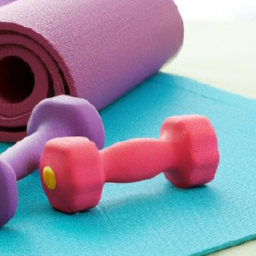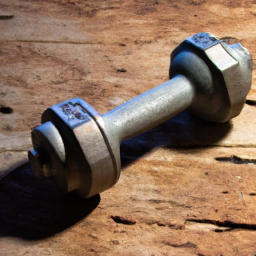In this article, we will be discussing the importance of staying active and healthy as you age, particularly for seniors. We all know that physical activity is essential for our overall well-being, but it becomes even more crucial as we grow older. You will learn about various workout routines that are suitable for seniors, focusing on exercises that improve strength, flexibility, and balance. By incorporating these routines into your daily life, you can maintain a healthy and active lifestyle as you age.
Why Staying Active is Important for Seniors
As you age, it becomes even more essential to prioritize your health and well-being. Staying active through regular exercise is one of the best ways to maintain your physical and mental health as a senior. While it’s common for older adults to experience age-related health issues and a decline in cognitive function, engaging in regular workouts can help prevent and manage these challenges. In addition, exercise has been proven to boost mood, improve overall well-being, and increase longevity.
Benefits of Exercise for Seniors
Exercise offers a wide range of benefits for seniors, both physically and mentally. First and foremost, regular physical activity helps maintain and improve cardiovascular health. It reduces the risk of developing chronic diseases such as heart disease, high blood pressure, and diabetes. Exercise also helps to control weight, reduce the risk of falls and injuries, and promote healthy bones and joints.
Additionally, regular exercise can improve cognitive function and memory in seniors. Studies have shown that physical activity increases blood flow to the brain, leading to improved attention, focus, and overall cognitive performance. Exercise also stimulates the release of endorphins, which are natural mood elevators, helping to combat symptoms of depression and anxiety that are common in older adults.
Preventing Age-Related Health Issues
Engaging in regular exercise is crucial for preventing age-related health issues. By staying active, you can reduce the risk of developing chronic diseases that often accompany aging, such as heart disease, diabetes, and certain types of cancer. Exercise helps to maintain healthy blood pressure, cholesterol levels, and blood sugar levels. It also improves overall immune function, reducing the risk of infections and illnesses.
Regular physical activity is also important for maintaining a healthy weight. As you age, your metabolism tends to slow down, making it easier to gain weight. By incorporating exercise into your daily routine, you can boost your metabolism and burn calories more efficiently, helping to prevent weight gain and obesity-related health problems.
Improving Cognitive Function
One of the most remarkable benefits of exercise for seniors is its positive impact on cognitive function. Studies have shown that physical activity can improve memory, attention, and problem-solving skills in older adults. Exercise increases blood flow to the brain, delivering oxygen and nutrients that are essential for optimal brain function.
Engaging in regular physical activity has also been linked to a reduced risk of developing age-related cognitive decline, such as dementia and Alzheimer’s disease. Exercise stimulates the growth of new brain cells and promotes the production of proteins that enhance brain health. It also reduces the risk of vascular disorders that can lead to cognitive impairment.
Boosting Mood and Well-being
Exercise is not only beneficial for your physical health but also for your mental health and overall well-being. Regular physical activity stimulates the release of endorphins, which are natural mood boosters. These feel-good chemicals help to reduce symptoms of depression and anxiety often experienced by older adults.
In addition to its mood-enhancing effects, exercise provides a sense of accomplishment and purpose. It improves self-esteem and body image, leading to greater self-confidence and a positive outlook on life. Engaging in physical activity also offers opportunities for social interaction, whether it’s joining a group exercise class or taking a walk with a friend. These social connections further contribute to mental well-being and a sense of belonging.
Choosing the Right Workout Routine
When it comes to choosing the right workout routine as a senior, it’s important to consider your individual needs, fitness level, and abilities. Consulting with a healthcare professional, such as your doctor or a certified fitness trainer, is a crucial first step. They can assess your health condition, provide guidance on exercise modifications, and help create a safe and effective workout plan tailored to your specific needs.
It’s also important to consider your personal fitness level and abilities. Start with exercises that are appropriate for your current fitness level and gradually increase the intensity and duration as you become more comfortable. Remember that it’s never too late to start exercising, and any physical activity is better than none.
Exploring Different Types of Exercises
There are various types of exercises that are beneficial for seniors, each offering unique benefits. Cardiovascular exercises, also known as aerobic exercises, are essential for maintaining heart health and improving endurance. Some popular cardiovascular exercises for seniors include brisk walking, swimming, cycling, and aerobic classes. These activities can be easily modified to suit your individual fitness level and abilities.
Strength training exercises are another important component of a senior workout routine. They help to maintain muscle mass, improve bone density, and increase overall strength. Bodyweight exercises, such as squats, lunges, and push-ups, are excellent options for strength training. Resistance band workouts, using free weights, or incorporating machines at the gym are also effective ways to build strength.
Flexibility and Balance Exercises for Seniors
Flexibility and balance exercises play a crucial role in maintaining mobility and preventing falls in seniors. Yoga, tai chi, and Pilates are excellent options for improving flexibility, balance, and overall body awareness. These activities focus on slow, controlled movements, gentle stretching, and balance poses. They can be easily modified to accommodate any fitness level and can be practiced in a group setting or at home. Incorporating stretching routines into your daily routine is also beneficial for maintaining flexibility and preventing muscle stiffness.
Safety Considerations for Senior Workouts
When engaging in workouts as a senior, it’s important to prioritize safety to avoid injuries and other complications. Always remember to warm up before exercising and cool down afterward to prepare your body and prevent muscle strains. Listen to your body and avoid overexertion; take breaks and rest as needed.
To minimize the risk of injury, it’s essential to use proper form and technique during exercises. If you’re unsure how to perform a specific exercise, it’s best to seek guidance from a qualified fitness professional. They can teach you proper form, provide modifications if needed, and ensure your safety during workouts.
Tips for Incorporating Exercise into Daily Routine
Incorporating exercise into your daily routine can be challenging, but with some simple strategies, it can become a habit. Setting realistic goals is crucial to stay motivated and avoid frustration. Start with small, achievable goals and gradually increase the intensity and duration of your workouts.
Creating a schedule and setting aside dedicated time for exercise can help ensure consistency. Treat your workout time as an important appointment with yourself.
Making physical activity a social event can also increase enjoyment and motivation. Invite a friend or family member to join you for a walk or sign up for group exercise classes. Having someone to exercise with can make the experience more enjoyable and provide additional accountability.
Utilizing technology and fitness apps can also be helpful in tracking your progress and staying motivated. There are numerous fitness apps available that offer workout routines, track your steps and heart rate, and provide guidance on proper form.
Modifications for Seniors with Medical Conditions
If you have specific medical conditions, it’s important to take additional precautions and modifications when exercising. Here are some considerations for seniors with common medical conditions:
Exercising with Arthritis
For seniors with arthritis, low-impact exercises such as swimming, water aerobics, or stationary cycling are gentle on the joints while still providing cardiovascular benefits. Strength training exercises should focus on lighter weights and higher repetitions to avoid placing excessive stress on the joints.
Managing Diabetes through Exercise
For seniors with diabetes, regular exercise is crucial for managing blood sugar levels. Moderate-intensity cardiovascular exercises, such as walking or cycling, can help improve insulin sensitivity and blood sugar control. Be sure to monitor your blood sugar levels before, during, and after exercise, and make adjustments as necessary.
Heart Health Considerations
If you have a heart condition or have had a cardiac event, it’s important to consult with your doctor before starting an exercise program. Depending on your specific condition, your doctor may recommend specific guidelines and precautions for your workouts. Engaging in cardiovascular exercises at a moderate intensity is generally safe but listen to your body and stop exercising if you experience any chest pain, dizziness, or shortness of breath.
Coping with Osteoporosis
For seniors with osteoporosis, it’s essential to focus on exercises that improve bone strength and balance. Weight-bearing exercises such as walking, dancing, and low-impact aerobics can help maintain bone density. Strength training exercises, especially those targeting the hips, wrists, and spine, can also be beneficial. It’s important to avoid exercises that involve forward bending, excessive twisting, or heavy weights that may increase the risk of fractures.
Maintaining Motivation for Regular Exercise
Staying motivated and committed to regular exercise can be challenging, but there are strategies that can help. Here are some tips to maintain motivation:
Setting Short-Term and Long-Term Goals
Setting goals can provide a sense of purpose and direction. Start by setting small, achievable short-term goals that can be easily tracked and celebrated. As you progress, set long-term goals that require more effort and dedication. Regularly reassessing these goals and celebrating milestones along the way can help maintain motivation.
Rewarding Yourself for Milestones
Rewarding yourself for reaching milestones can provide additional motivation. Treat yourself to something you enjoy after achieving a specific goal, such as buying a new workout outfit, taking a relaxing bath, or enjoying a favorite healthy meal. Rewards can help you stay motivated and make the journey more enjoyable.
Joining Exercise Classes or Clubs
Joining exercise classes or clubs can provide a sense of community and support. Whether it’s a group exercise class, a walking group, or a sports team, exercising with others can provide additional motivation and accountability. Not only will you be more likely to show up, but you may also make new friends with similar interests.
Tracking Progress and Celebrating Achievements
Tracking your progress can be highly motivating. Keep a workout journal or use a fitness app to log your workouts, track your steps, or monitor your heart rate. Seeing your progress over time can boost confidence and encourage you to keep going. Celebrate achievements along the way, whether it’s reaching a certain number of workouts or achieving a personal best in a specific exercise.
Conclusion
Age should never be a barrier to fitness. Staying active and engaged in regular exercise as a senior is crucial for maintaining optimal health and well-being. With the right workout routine and some modifications to accommodate individual needs, you can enjoy the myriad benefits of exercise, including improved cardiovascular health, enhanced cognitive function, a positive mood, and increased longevity. Take the first step towards a healthier lifestyle by incorporating regular physical activity into your daily routine. Remember, it’s never too late to start, and your future self will thank you for it.





